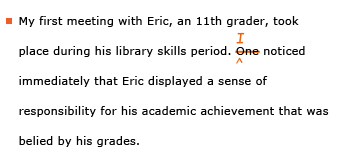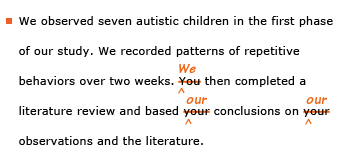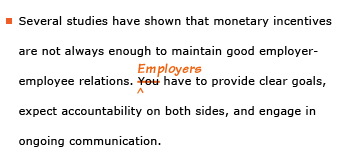Shifts in point of view
The point of view of a piece of writing is the perspective from which it is written: first person (I or we), second person (you), or third person (he/
First person (I or we)
The I (or we) point of view, which emphasizes the writer, is a good choice for informal letters and writing based primarily on personal experience.

In a personal reflective essay, such as the one from which this passage was taken, the writer should stick with the first person because she is relating her experiences in the classroom.

The writer should have stayed with the we point of view. You is inappropriate because the writer is not addressing readers directly.
Second person (you)
The you point of view, which emphasizes the reader, works well for giving advice or explaining how to do something.

You is an appropriate choice because the writer is giving advice directly to readers.
Note, however, that you should not use you in an indefinite reference meaning “anyone.”
Third person (he, she, it, they, one, nouns, pronouns)
The third-person point of view, which emphasizes the subject, is appropriate in formal academic and professional writing.

In a business report, the focus should be consistently on the subjects. Business reports rarely address the reader directly (you).
Shifts from the third-person singular to the third-person plural are especially common.

Although the writer might have changed they to he or she (to match the singular officer), the revision in the plural is more concise. In both revisions, the pronouns and antecedent agree.
Exercises: